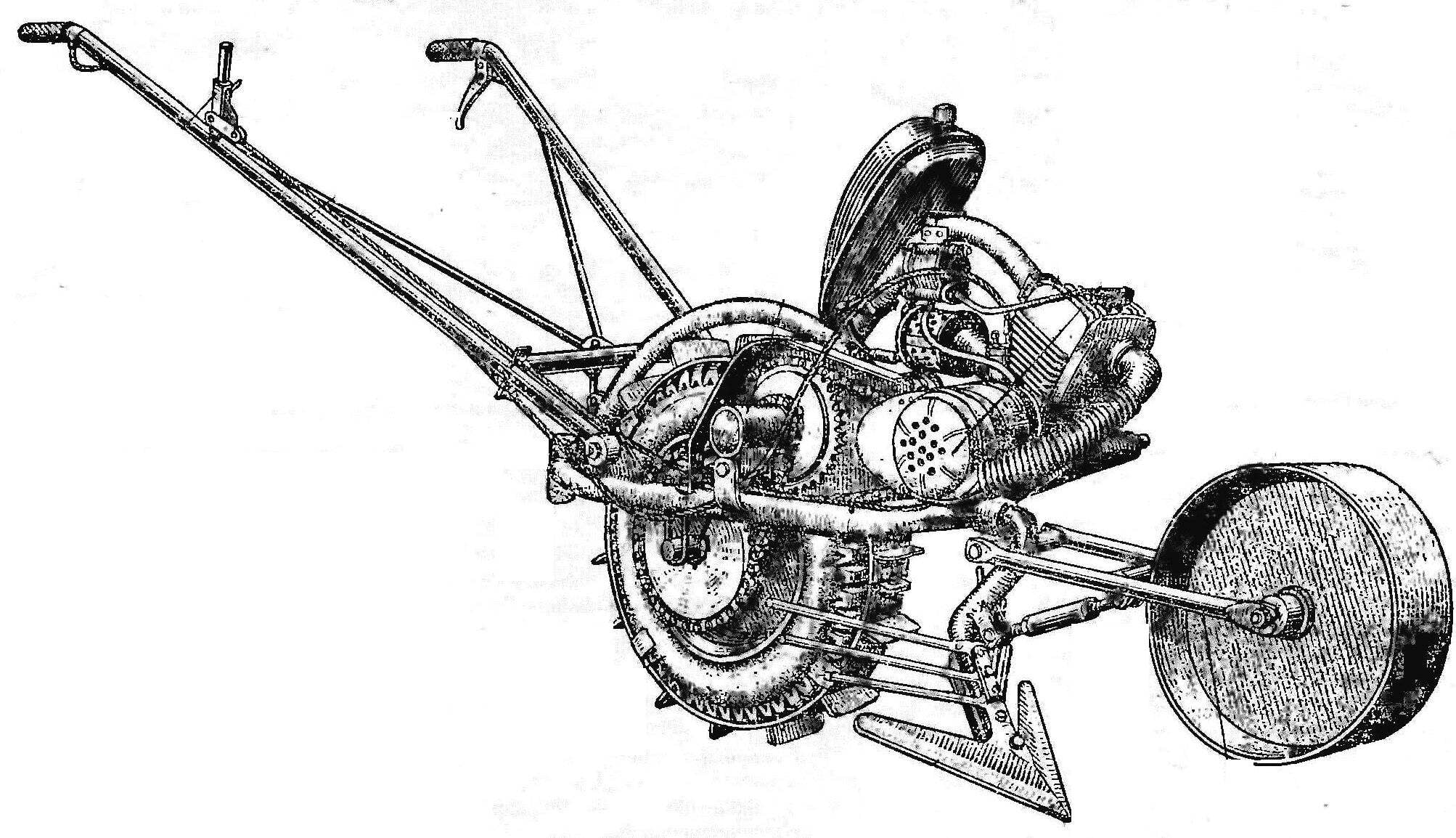
“Ancestor” of this machine, lawn mower GK-1 was built by students in St Michael’s training and production plant in 1978. About it has told the head of young technicians — lecturer of the criminal procedure code V. I. Popov (see “M-K” № 6, 1981). However, the possibility that the mower was still insufficient: the width was only 1 m and the actuator will bind the mechanism to a power source and thereby limiting its autonomy. This was the reason for making a new variant with high performance. The novelty was successful. Among the exhibits of the III all-Russian rally labor unions of students in urban schools, held in Rostov-on-don, she invariably attracted attention and was awarded by our magazine (see “M-K” N° 1, 1985). By the way, after this publication in the code of criminal procedure, Michael began to come from all over the country a letter asking them to send drawings of the mower. To answer each individually the authors, of course, was not. Today we provide the pages of the magazine mentor young designers of this machine.
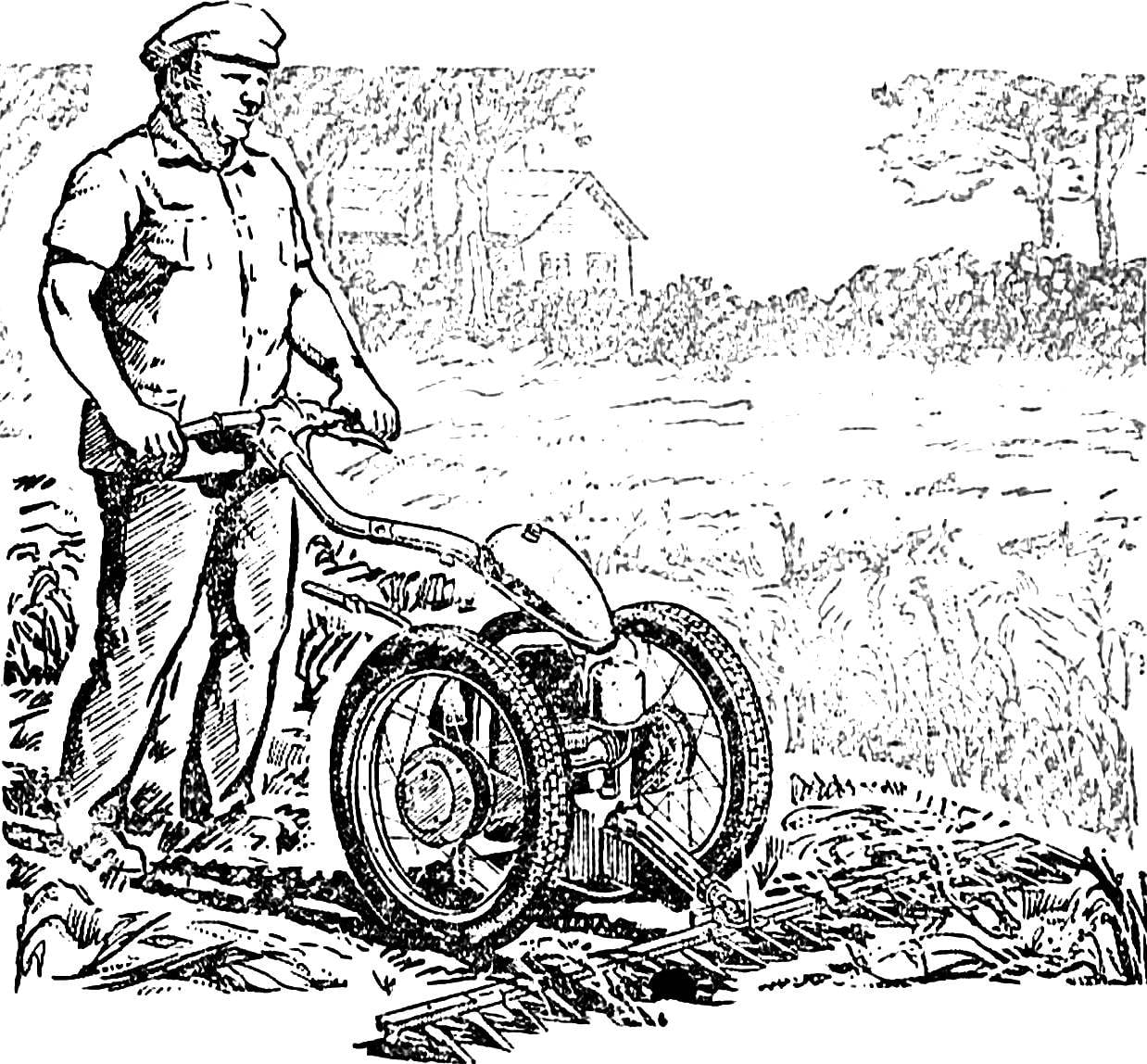

 Getting the design of this machine, I proceeded above all from the conditions of its future work. The soil in our area is mostly heavy loam, stones… and surface plots are far from perfectly smooth. In short, the operation was not easy. This fact determined the choice of the main parameters of the mechanism.
Getting the design of this machine, I proceeded above all from the conditions of its future work. The soil in our area is mostly heavy loam, stones… and surface plots are far from perfectly smooth. In short, the operation was not easy. This fact determined the choice of the main parameters of the mechanism.
 Model of champion of the USSR in 1986 in the class S4B V. Lunichkina is the result of work on improvement of the gliders with a flexible slat. Speaking with such devices, the Kazakh sportsman became the winner of many competitions.
Model of champion of the USSR in 1986 in the class S4B V. Lunichkina is the result of work on improvement of the gliders with a flexible slat. Speaking with such devices, the Kazakh sportsman became the winner of many competitions.
 “School” model class F2D — further development of the schematic published in “M-K” № 7, 1986 in the article “Record holder… simplicity.” Indigenous improvements of the characteristics of the new device was able to achieve, preserve the unique simplicity of the power unit (which rivals and assigned to our bouzoukis the name “schematic”). This primarily refers to the stability of the start and the behavior of the model in the maneuver on the windward side of the flight hemisphere.
“School” model class F2D — further development of the schematic published in “M-K” № 7, 1986 in the article “Record holder… simplicity.” Indigenous improvements of the characteristics of the new device was able to achieve, preserve the unique simplicity of the power unit (which rivals and assigned to our bouzoukis the name “schematic”). This primarily refers to the stability of the start and the behavior of the model in the maneuver on the windward side of the flight hemisphere.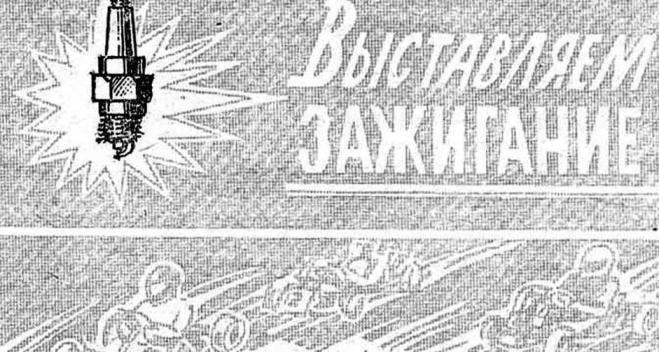
 Engines MMVZ-3 115 often used on maps and — with appropriate upgrades-cooling system — tillers and microfracture. Among the works on their service, there is also such as installation of ignition. At first glance it runs just the ignition timing that is specified in the instructions to the engine corresponds to the rotor position sensor, when its longitudinal groove coincides with the projection on the winding frame sensor. But not always: the spark occurs either too early or too late than it should be. Apparently, due to the scatter of the electrical parameters of the switch.
Engines MMVZ-3 115 often used on maps and — with appropriate upgrades-cooling system — tillers and microfracture. Among the works on their service, there is also such as installation of ignition. At first glance it runs just the ignition timing that is specified in the instructions to the engine corresponds to the rotor position sensor, when its longitudinal groove coincides with the projection on the winding frame sensor. But not always: the spark occurs either too early or too late than it should be. Apparently, due to the scatter of the electrical parameters of the switch.
 For simplicity, I decided to make the walk-behind, in-parzych, unicycle, and secondly, on the basis of units, components and parts of various machines manufactured in the factory. Took the frame of the motorcycle M-105. To do this, cut it up the pipe in four places: 60 mm higher than the front bracket of the engine mount 165 mm above the same rear bracket and 50 mm above the curved pipe going to the back of the pendulum fork (both sides).
For simplicity, I decided to make the walk-behind, in-parzych, unicycle, and secondly, on the basis of units, components and parts of various machines manufactured in the factory. Took the frame of the motorcycle M-105. To do this, cut it up the pipe in four places: 60 mm higher than the front bracket of the engine mount 165 mm above the same rear bracket and 50 mm above the curved pipe going to the back of the pendulum fork (both sides).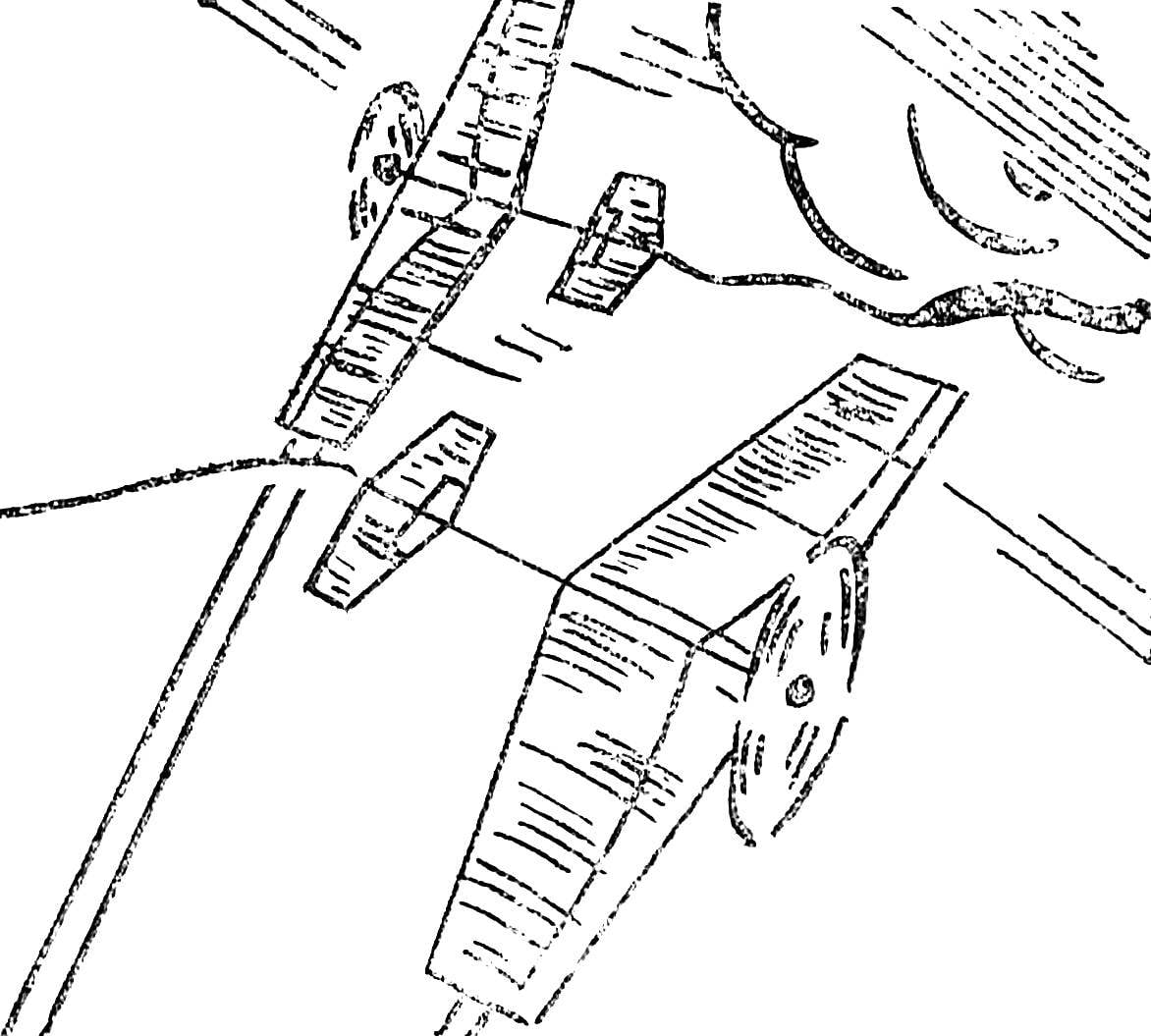
 “No, this simply cannot be!” — these or similar words — “the standard reaction” athletes of any rank. And calls it the mention of flight models, three years under construction in our group. When the interlocutors know that this is not about celebarty superoperator, and about the training, though consisting of a dozen pine parts… then the faces can be read only undisguised distrust.
“No, this simply cannot be!” — these or similar words — “the standard reaction” athletes of any rank. And calls it the mention of flight models, three years under construction in our group. When the interlocutors know that this is not about celebarty superoperator, and about the training, though consisting of a dozen pine parts… then the faces can be read only undisguised distrust.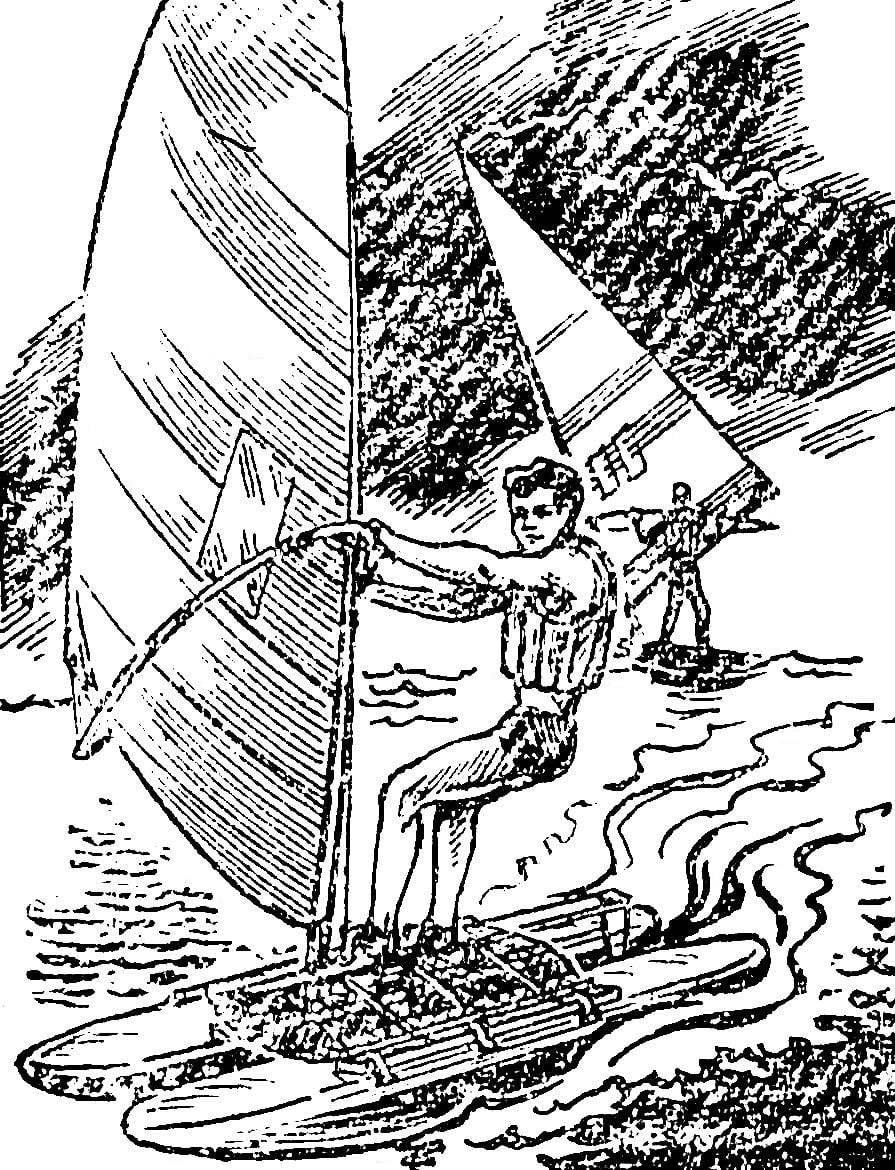


 Attract the attention of athletes and spectators time the model is tailless. Most of them presented in the traditional competition “Experiment” in recent years, has a wing to direct the sweep and power system tractor or pusher propeller. However, this scheme has a number of inherent disadvantages. So, with the engine in front of the wing there is a need for additional balancing weight for balancing the tail model, the tail boom has to greatly increase to ensure a sufficient efficiency of the vertical stabilizer. And when using a power plant with pusher propeller there is a significant probability of hitting the hands of the athlete during the spinning propeller when starting Tierney.
Attract the attention of athletes and spectators time the model is tailless. Most of them presented in the traditional competition “Experiment” in recent years, has a wing to direct the sweep and power system tractor or pusher propeller. However, this scheme has a number of inherent disadvantages. So, with the engine in front of the wing there is a need for additional balancing weight for balancing the tail model, the tail boom has to greatly increase to ensure a sufficient efficiency of the vertical stabilizer. And when using a power plant with pusher propeller there is a significant probability of hitting the hands of the athlete during the spinning propeller when starting Tierney.